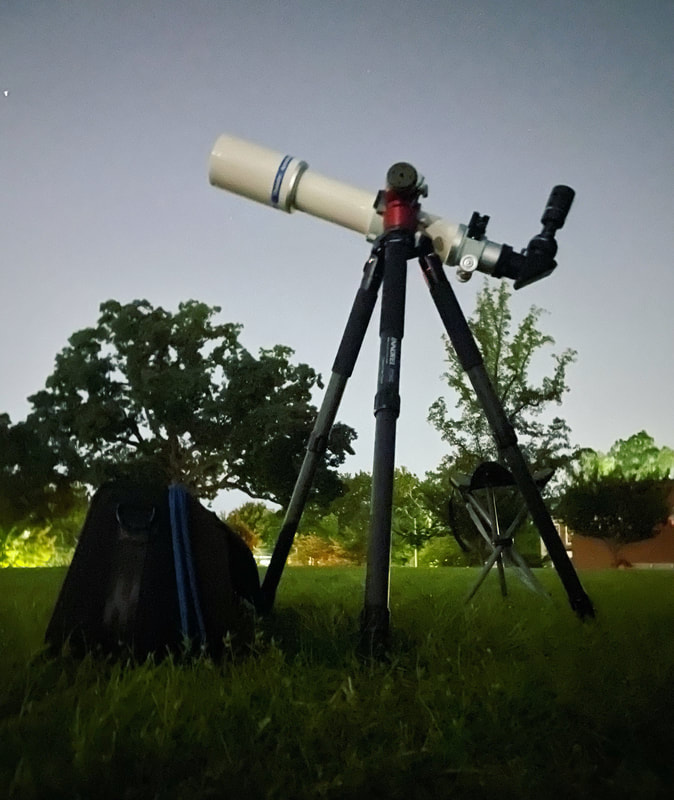|
So the Takahashi, it turns out, is a pretty good telescope. I've now used it a few times on my observing deck, after amassing all those little accessories, and systematically exchanging my good-but-not-great eyepieces for top-of-the-line TeleVues. Jupiter and Saturn - both near their oppositions when I received the telescope - can in good seeing look even better (!) through the Takahashi than they do through my TV 85. The difference is not huge, however, and the TV 85 does have some advantages over the slightly bigger FC-100DC. It cools down almost instantaneously - the Takahashi might take just a bit longer - and it has a wonderful size and feel: compact but solid, like a piece of metal. Visually it's no slouch at all, and I just like the TeleVue mechanics a bit more than the Takahashi equivalents. The dual-speed TeleVue focuser, for example, is just so smooth, whereas the single-speed Takahashi equivalent is stickier. There are also so many little extenders and parts to screw and unscrew with the FC-100DC - Takahashi sure doesn't make it easy to decipher what should and shouldn't be attached to the telescope - and even when I've got the right setup some of my eyepieces still don't come into focus. It will be better on good nights than the TV 85, and perhaps meaningfully better on red objects - like Mars - given that red light does not quite come into focus in the TeleVue as it does in the Takahashi, but it's more finicky and I'll use it less frequently. You just can't beat the TV 85 for grab-and-go . . . but it sure is nice to have the slightly bigger Takahashi. I've been experimenting with iPhone astrophotography. The image above is the best I've taken of Saturn so far. If I try to take a picture, all I get is a brilliant white oval. But if I take a video, I can usually get a few frames that look like Saturn - albeit so much blurrier than what I see through my eyepiece. Up on my observation deck, the planets bounce around wildly in the currents coming off my building - and in the currents of our often-turbulent atmosphere. My iPhone naturally translates that bouncing into noise: the blurriness in my attempted astrophotographs, and the corresponding lack of contrast. Jupiter is completely washed out, no matter what I do. But Saturn is just dim enough and high enough in contrast to look like something. In the above picture, you can make out the Cassini Division and some cloud belts. Not bad for an iPhone production! Lunar photography is a bit easier. Views through my telescopes are incredibly crisp - razor-sharp on the best nights - but of course all that sharpness disappears in the pictures. Yet the Moon is so big and the views are so clear that it doesn't matter as much as you'd think. Sometimes the pictures are still quite satisfying. I really liked taking these pictures of the lunar terminator, which feature a crater, Gassendi, that was the focus of nineteenth- and early twentieth-century debates about changes in the lunar environment (and the possibility of lunar life). You can also see just how bright it can be on our observation deck. I'm very much looking forward to when the mosquitoes have abated enough for me to try a local park.
0 Comments
Leave a Reply. |
Archives
March 2024
Categories
All
|







 RSS Feed
RSS Feed